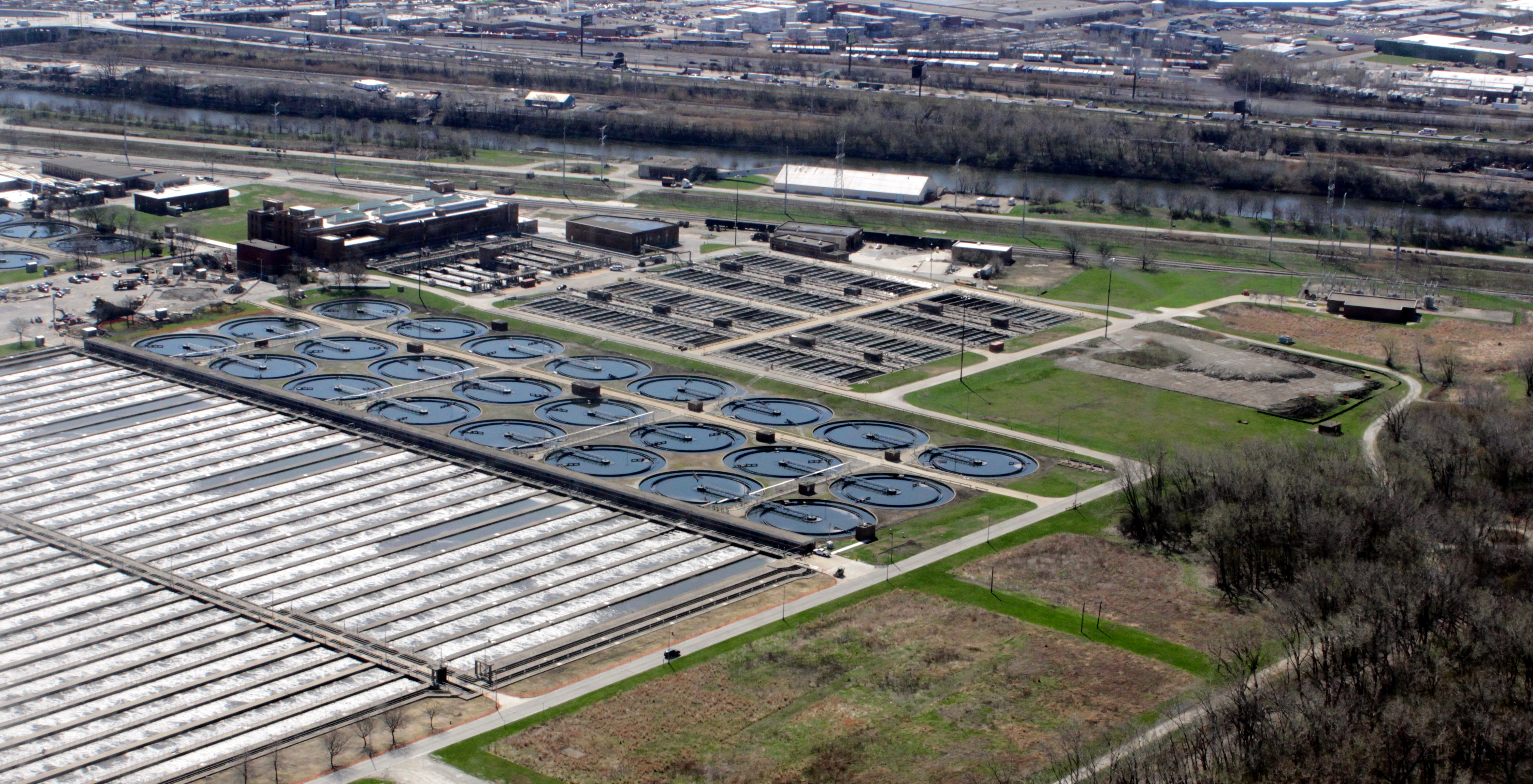This post is one in a series featuring the complete slate of advanced energy technologies outlined in the report This Is Advanced Energy.

Image courtesy of U.S. Army Corps of Engineers Chicago District.
Drinking water treatment systems and wastewater treatment plants account for approximately 3% of electricity use in the United States, or 100 billion kWh annually — enough to power over 9 million homes. These facilities have several options to reduce their electricity use, with potential savings estimated at 15% to 30% nationally. In water treatment systems, approximately 80% of electricity is used for pumping, so savings come mostly from pumps, motors, and variable-frequency drives. By allowing motors to adjust to fluctuating pumping needs, variable-frequency drives can reduce electricity use by up to 50% while also extending motor life. In wastewater treatment plants, electricity is used mostly for aeration, pumping, and solids processing, while thermal energy is required for digesters. Here, too, variable frequency drives can reduce energy use for pumping and aeration, while technologies such as fine-bubble diffusers can reduce energy needed for aeration.
Facilities can also reduce electricity purchased from the grid by using on-site generating technologies such as solar, wind, in-conduit hydro, or combined heat and power, which in wastewater treatment plants is often fueled by biogas produced as part of the treatment process. Deer Island Wastewater Treatment Plant in Massachusetts uses all these technologies.
There are approximately 200,000 drinking water treatment systems and 15,000 wastewater treatment facilities across the country, not including industrial facilities, and some have already achieved significant progress in energy management. By using variable-frequency drives from ABB for aeration, the Beloit Water Pollution Control Facility in Wisconsin reduced its electricity consumption by 15%. The Encina Wastewater Authority in California achieved even greater savings, using fine-bubble diffusers for aeration, variable-frequency drives, energy-efficient motors, CHP, and off-peak pumping. In New York, the City of Rome partnered with Johnson Controls to install a fine bubble aeration system and variable speed drives.
Energy for potable water and wastewater treatment can account for 30% to 40% of energy use for municipalities that operate these facilities. Energy efficiency and on-site generation bring huge cost savings: in Beloit, Wisconsin, the water pollution control facility expects to save $75,000 annually; the changes in Encina are estimated to save the facility over $600,000 each year; by making use of a performance contract, the City of Rome will achieve $8.6 million in benefits over 15 years without raising taxes; the Deer Island plant in Massachusetts saves $3.5 million in electricity costs and $15 million in fuel oil costs annually, and generates $500,000 in revenue from participating in demand response markets, reducing pumping at times of peak demand.
